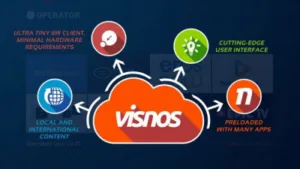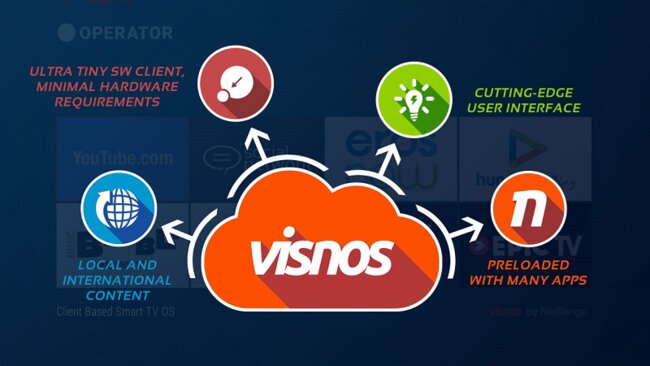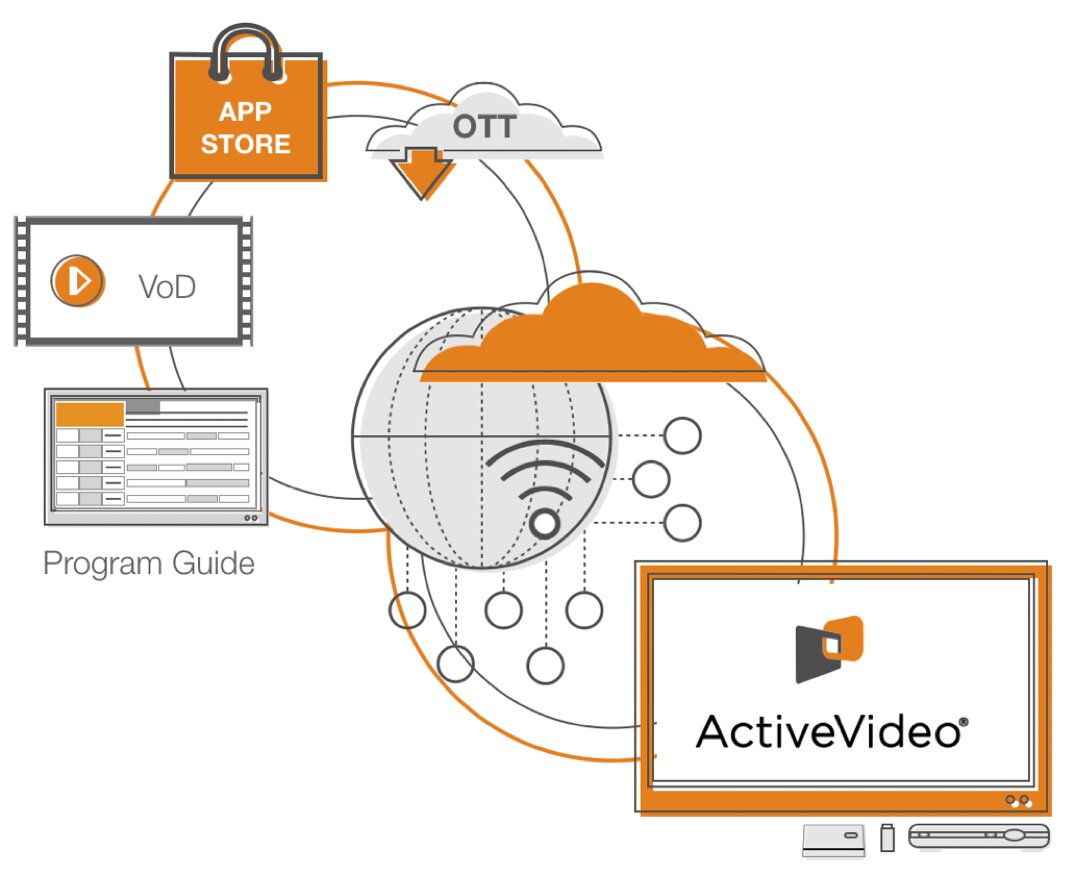
NetRange MMH GmbH of Germany (and a company in the Access of Japan group of companies since April 2019) said in a release that it now has developed a cloud-based Visnos (Virtual Smart TV NetRange OS) service that allows smart applications to be run on a Smart TV without a browser in the set. Browsers need processors and memory and that costs money. You also need some middleware to get the broadcast and OTT video and services to work together. NetRange said that its technology can reduce the incremental cost of supporting Smart TV by 75%. NetRange is an established supplier of technology for smartTV brands around the world.
NetRange said that the Visnos software on the TV sends remote control clicks to the cloud platform from entry-level TVs, Visnos then efficiently sends the Smart TV UI back to the TV as graphics. When the consumer starts a video playback, Visnos routes the video directly from the video server to the connected TV – without the need for high-level processing in the TV or the ability to run a browser. Visnos also supports YouTube casting from mobile devices to the TV, with more services to come.
Now, that news was interesting, but not, I thought, really a breakthrough. I first came across Active Video Networks at CES in 2010. They had the same idea of sending commands to the cloud and just sending back a user interface to the set as a video stream. The system could allow a dramatic reduction in capex per user to support smart functions, compared to upgrading an STB, so service providers that wanted to avoid having to upgrade their STB ecosystem had the possibility of offering new and hybrid services. After signing Ziggo in the Netherlands, ActiveVideo signed up Liberty Global and Charter. (the firm didn’t like to use the AVN acronym as it also stood for “Adult Video News, the “trade news” for the US porn industry! avn.com is not a work-friendly website!) In 2015, Charter and Arris acquired ActiveVideo.
We also thought that the system could be attractive to set makers. After all, this architecture allows the TV maker to offer new interfaces and technologies to the user without having to worry about the hardware in the set (although, of course, extending the life of the set may not be in the interest of the set maker!).
However, the reality is that to provide video streams means an on-going cost for a transmission system as well as cost at the server end, so none of the set makers that we spoke to about the idea was happy to adopt it. After all, if you get the consumer to pay more for a Smart TV with more technology in it, at least you get an upfront amount of money to help to support the longer term cost of maintaining the system and support of key services. On the other hand, if consumers don’t have the cash to pay for smartTVs up front, they are likely to be using Free-To-Air (FTA) TV services and be unlikely to want to pay any subscription.
The logic of this issue of costs is that the technology is likely to mainly appeal to companies that already have the connection costs, at least, covered, such as Ziggo and Charter. NetRange may have an answer to this, as it has persuaded Itel, which is a mobile provider in India as well as a maker of TVs in that country, to use the technology to support its TVs in Asia and Africa. Itel’s prices in India start from INR9,000 ($123) for a 32″ set, so it has to compete at low prices.
We reached out to Netrange but hadn’t got a response at press time on some of the cost issues – this week can be a tough time to get responses! If we can solve this conundrum, we’ll report again. (BR)



